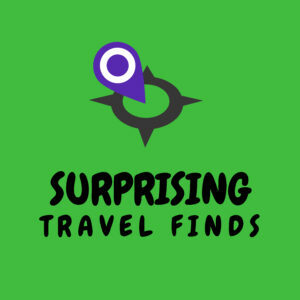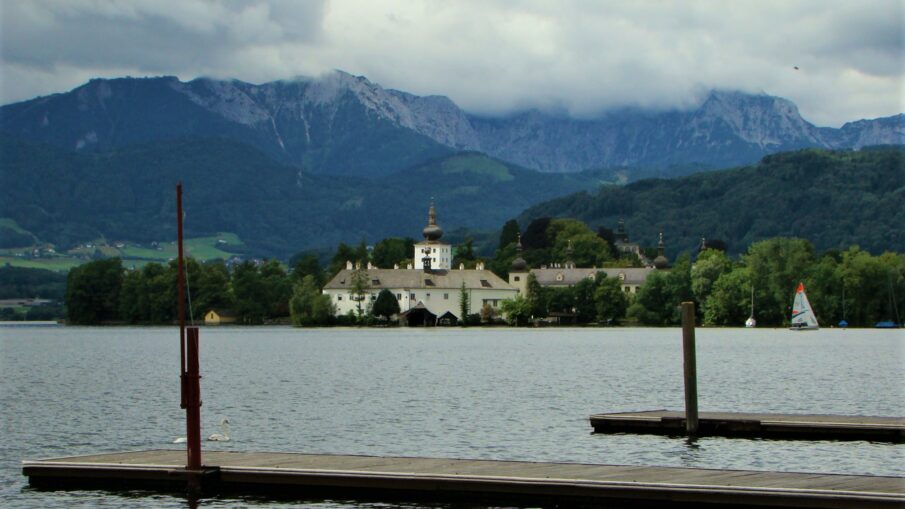At the end of a Danube cruise from Budapest to Linz, a free day on the itinerary reveals a surprising travel find.
Welcome to Gmunden.
The masses are visiting Salzburg, a worthy and popular choice. But we had already been there and stayed several days.
After days in close quarters on a ship, we wanted to find a place no one else was going. Needed: a retreat in the Alps that affords quiet beauty amid relatively few tourists.
Gmunden, on the northern shore of Traunsee (Austria’s deepest lake), isn’t likely to be at the top of everyone’s to-do list in Europe. But it is an example of a small city that could add value to a European vacation.
Summer is the busiest season in Gmunden, but busy here is a relative term. Visitors tend to come for tennis, sailing, or to open summer homes on the lake after a long winter in Vienna. Book a train ticket to Gmunden (the G is silent, by the way), and your fare includes passage on a street car that takes you the mile or so into the center of town.
Not many cities of 13,000 offer streetcar service, but Gmunden offers much that can’t be found elsewhere.
It lies in Austria’s Salzkammergut region, an area of rugged alpine peaks, deep blue lakes and salt mines. From our cruise terminus in Linz, only one hour is required to arrive by train. From Linz, there are easy connections to Salzburg, Munich and Vienna.
Once off the train, it’s nice to stretch your legs. The city has constructed a beautiful walkway around the lake shore, and you’ll find boat excursions available alongside some sidewalk eateries, including kayak rentals. If you go kayaking, gear up accordingly. This is cold water all year, and the air temperature during our mid-July visit was only 60F degrees.
The rewards are great. You’ll be enjoying grand views of the Austrian Alps, including the sheer cliffs of Traunstein, which seems taller than it’s official height of 5,548 ft. due to the boulder-like sheer walls that tower over lake and town.
For an overview, Grünberg cable car (Seilbahn in German) provides a 3,900 ft. view of the lake and Gmunden. Hearty souls can hike one way or both ways, but round trip rates on the Seilbahn are cheaper after 2 p.m.
Back in town, there are at least two must-sees.
For generations, Gmunden earned its regional fame for ceramics.
The town is also known for its ceramics industry. Gemunder Keramik factory tours are €8/person — a fee that is refunded if you buy at least €50 in product after the tour. Bear in mind that the tour schedule changes with the seasons, so consult the website before planning an itinerary.
This is one of those opportunities that doesn’t come around often — a look behind the scenes at what is billed as “Europe’s largest ceramic manufactory.” You’ll see the complete manufacturing process, including the painting studios. You’ll even get your hands dirty, experiencing a touch station where clay used to make the pieces is yours to experience “with all of your senses.”
A second must-see is located on a small island near the town’s shoreline. Schloss Ort, is a castle with history dating back more than 1,000 years. The castle was passed from ruler to ruling class owner until it came into the possession of Franz Joseph I in 1914. If you remember your European history, you’ll recall the assassination of his nephew triggered the start of World War I, plunging Austria into a conflict that would change millions of lives. When the war ended, the castle largely was forgotten and deteriorated until the early 1970s, when restoration efforts began.
Even if you have little historical interest, it’s only €3 to walk around the island and enjoy views of the lake. Inside, be aware that almost all of the exhibit descriptions are written only in German.
That is part of the beauty of escaping to Gmunden for a day. You’ll hear only German spoken in most places. Servers in restaurants and others who cater to visitors will speak English, but you’ll have an authentic Austrian Alpine experience in one of its most picturesque lake towns.

